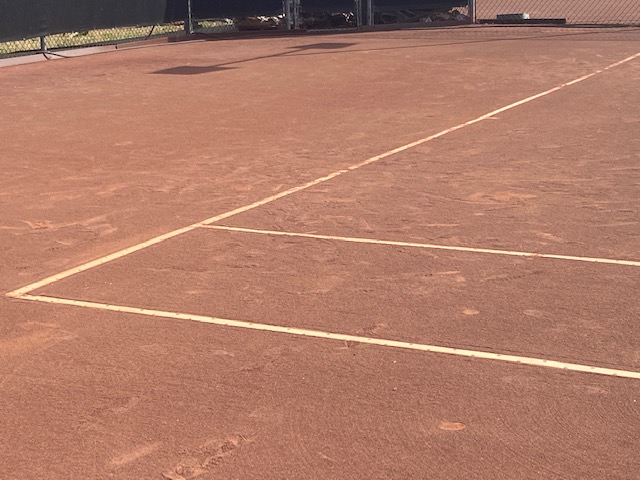Tennis News You Can Use
Last week the USTA Official Facebook page shared a link with a survey targeting tennis players in the 18-39 age demographic. Discussion on Facebook was spirited… and mostly from people who were over 40 who were miffed at being excluded. According to the Facebook request, “The USTA is conducting a focus group to better understand what, how, and when tennis players in this demographic want to play.” As my family consistently reminds me, I passed 40 a very long time ago. However, in the true Fiend at Court spirit, I have some thoughts. Let’s regard this as my focus group of 1.
The problem that the USTA is trying to solve is that players in the 18-39 demographic don’t typically engage in league and tournament tennis in very high numbers. The USTA has been investing resources and attention on this problem for years without any tangible results. I think there are two reasons for the continued failure in this area. First, I don’t think that the USTA has seriously considered the root causes for lack of participation in this demographic. Second, they are framing the issue strictly in terms of tennis participation in leagues and tournaments.
Reframing the “Problem”
Players in the 18-39 demographic don’t engage in tournaments and league play because they have other things going on in their life. It is not that they are disinterested in tennis. Additionally, modifications in the format of play within the current constraints of league and tournament tennis is not going to address the reason they don’t engage in leagues and tournaments.
People in that age range go through distinct phases of life that has significant time constraints. College, launching careers, establishing households, and raising kids are all typically higher priorities. Based on my experience and observations of the tennis playing community around me, the “Bathtub” in participation is because there are simply other things going on in their lives.
That is not to say that the USTA shouldn’t consider how to keep that community engaged in tennis, but rather the model of engagement needs to be expanded beyond simply leagues and tournaments. Simply shuffling around formats will not increase participation. Neither will adding more leagues. The USTA addition of an 18-39 league is probably the dumbest idea that ever saw its way to implementation.
The problem isn’t that these players are not playing leagues and tournaments, but rather that they are not engaging in tennis at all. That is the problem the USTA should be trying to solve.
Potential Solutions
Bridge Juniors into Adult Tennis. It has been a long time since I aged out of junior tennis. At the time, USTA Leagues were only available to adults 21 and over. When the umpire I gave birth to more recently aged out of junior tennis, there was ZERO reach out from the USTA to inform her on her adult playing options. While I think that the barriers to participation for that demographic remain, the USTA should consider that it might be easier to transition current junior players than to let them leave and then try to draw them back.
Reimagine Tennis Engagement. What is needed is for this demographic to keep playing so that when they are ready to resume league and tournament engagement they are already tied into the ecosystem. Cardio tennis is a good start. Live ball drills should be universally offered. Every college campus should have organized live ball drills a few times a week. Every children’s group lessons should have a parallel adult program offering. Put another way, the children’s lessons can be the child care while the parent gets some exercise as well.
Develop Programs to Assist and Support Returning Players. I went 28 years without playing a USTA sanctioned tennis match. My return to adult tennis was a self-guided affair. I could have benefitted from some mentorship and guidance in navigating that transition. Additionally, I am astonished at the general organizational disinterest in understanding what triggered my return. The USTA should reach out to every returning player to see if there is anything in their journey that might help in drawing other former players back to the game.
Data Management and the USTA
Perhaps the most astonishing thing about the USTA reaching out on social media to try to survey active tennis players in the 18-39 demographic is what it implies about the data management capabilities of the organization. First… shouldn’t the USTA already have contact information for those individuals? Apparently not…?
Additionally, the USTA would probably be better served in studying people who don’t currently play for information on what would draw them to tennis. Surveying current players and exploring ways to shuffle the formats of tennis that they are already engaged with is simply activity rather than progress.
Related Previous Posts on this Theme
- Seven and Seven: Transitioning Juniors Into Adult Tennis Tournaments. An examination of the tournament structure updates that is a lead in to the two following posts.
- Solving the NTRP Initialization Problem for Former Juniors. Juniors should be assigned a NTRP rating on their 18th birthday.
- Radical Ideas for Bridging Juniors to Adult Tennis. Ideas for retaining juniors. My own thinking has evolved and in the interim the USTA has announced that membership fees will be phased out.
- Why I Returned to Tennis. The story of how one former junior tennis returned to the game.
- Mapping My Return to Competitive Tennis Play. Part 2 of the previous post.
- Eight and a Half Ideas for Enticing Former Juniors Back to Tennis. More ideas for re-engaging former players.



